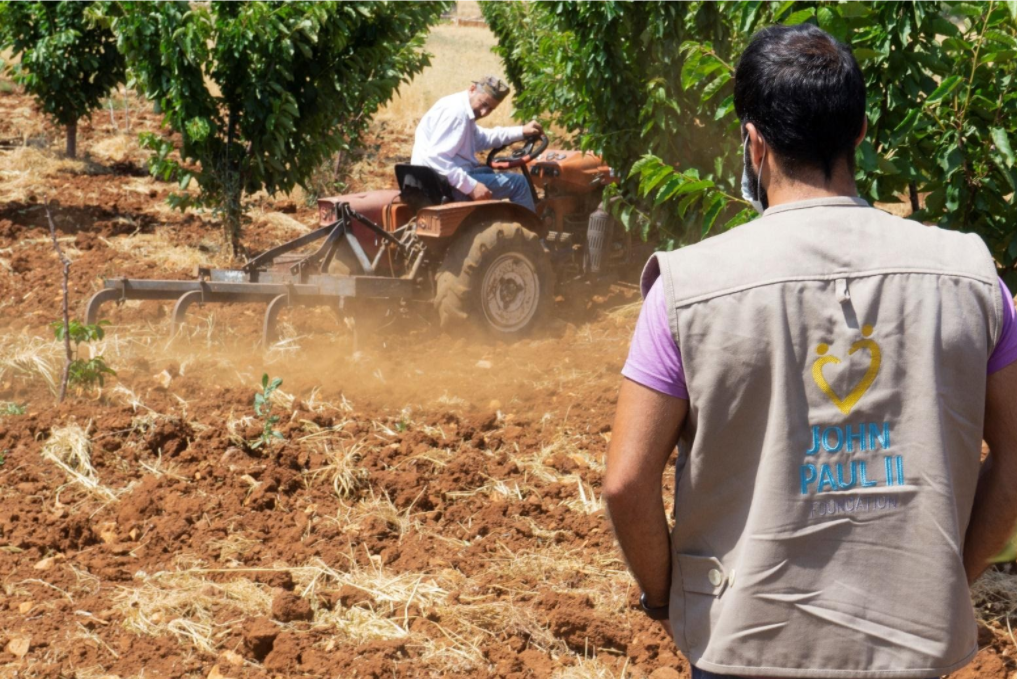
Dalle ciliegie della Bekaa un modello per gli agricoltori libanesi
Di Carlo Simonetti
(responsabile dell’Ufficio Progetti della Fondazione Giovanni Paolo II)
Il 2020 è stato un anno straordinario per tanti piccoli agricoltori libanesi. Nello scorso agosto, infatti, si è concluso il progetto realizzato dalla Fondazione Giovanni Paolo II grazie ai finanziamenti dell’Agenzia Italiana per la Cooperazione allo Sviluppo (AICS) e rivolto alla riqualificazione dei produttori di ciliegi libanesi del Nord della Bekaa. La Fondazione ha accompagnato 150 imprese agricole locali in un percorso di riorganizzazione orientato alla produzione e alla commercializzazione di un frutto che fosse di alta qualità e al contempo competitivo anche sul mercato internazionale. Il prodotto è infatti il risultato di un completamento della filiera avvenuto grazie all’associazione dei beneficiari in quattro cooperative e alla diffusione del Quality Management System (QMS), un disciplinare da adottare per le fasi pre e post raccolta. Prima del progetto, i produttori erano più restii ad associarsi e a seguire norme di coltivazione che fossero calibrate all’ecosistema locale o norme di processamento orientate al mercato organizzato o dell’export. Il risultato era spesso quello di vendere all’ingrosso un frutto grezzo, non selezionato in base alle dimensioni e non confezionato. L’export era poi limitato dalla mancata adesione a sistemi di tracciabilità e a certificazioni di qualità internazionalmente riconosciute.
Oggi, i produttori libanesi godono della vendita di un prodotto selezionato da macchine calibratrici in base al diametro, conservato in celle frigorifere e confezionato secondo un packaging il cui design si sposa con il marchio realizzato per il Consorzio Fruit and Vegetables (FAV), creato per riunire le cooperative nel commercio del prodotto. Il prezzo medio di vendita del prodotto si è progressivamente alzato grazie anche all’applicazione del QMS, che ha promosso l’adozione di un sistema di potatura, di irrigazione e di fertilizzazione ecocompatibile e a miglioramento della qualità del frutto. Un frutto oggi etichettato e certificato, dal calibro sempre più alto e quindi sempre più di Classe “A” o “B” come richiesto dalle principali catene di supermercati nazionali e del mercato dell’export.
Già al termine del 2019 si era riscontrato un incremento della quantità di prodotto venduto tramite cooperativa del 175% circa rispetto alla stagione precedente e un aumento dei prezzi di vendita in favore dei piccoli produttori, dei lavoratori stagionali e dei dipendenti assunti nelle cooperative. Un risultato importante: il prezzo al chilo delle ciliegie esportate, risultato superiore del 320% rispetto a quello originario, ha fruttato un aumento dei profitti pari al 56% nelle mani dell’agricoltore, generando un surplus che potrà essere utilizzato per investimenti e per far crescere le imprese agricole, offrendo una prospettiva di lavoro più attraente per le giovani generazioni. Buona parte del restante 264% va invece a coprire una maggior occupazione e remunerazione della forza-lavoro stagionale, sia per la coltivazione sia per le fasi post raccolta: l’introduzione del processamento del frutto in magazzino ha portato ad assumere molte donne e giovani delle comunità rurali.
Una dimostrazione concreta che un’agricoltura che punta alla qualità e alla sostenibilità ambientale può essere la chiave di svolta per tanti piccoli produttori che tradizionalmente sono esclusi dalla catena del valore e sono spesso costretti ad abbandonare le proprie comunità.
